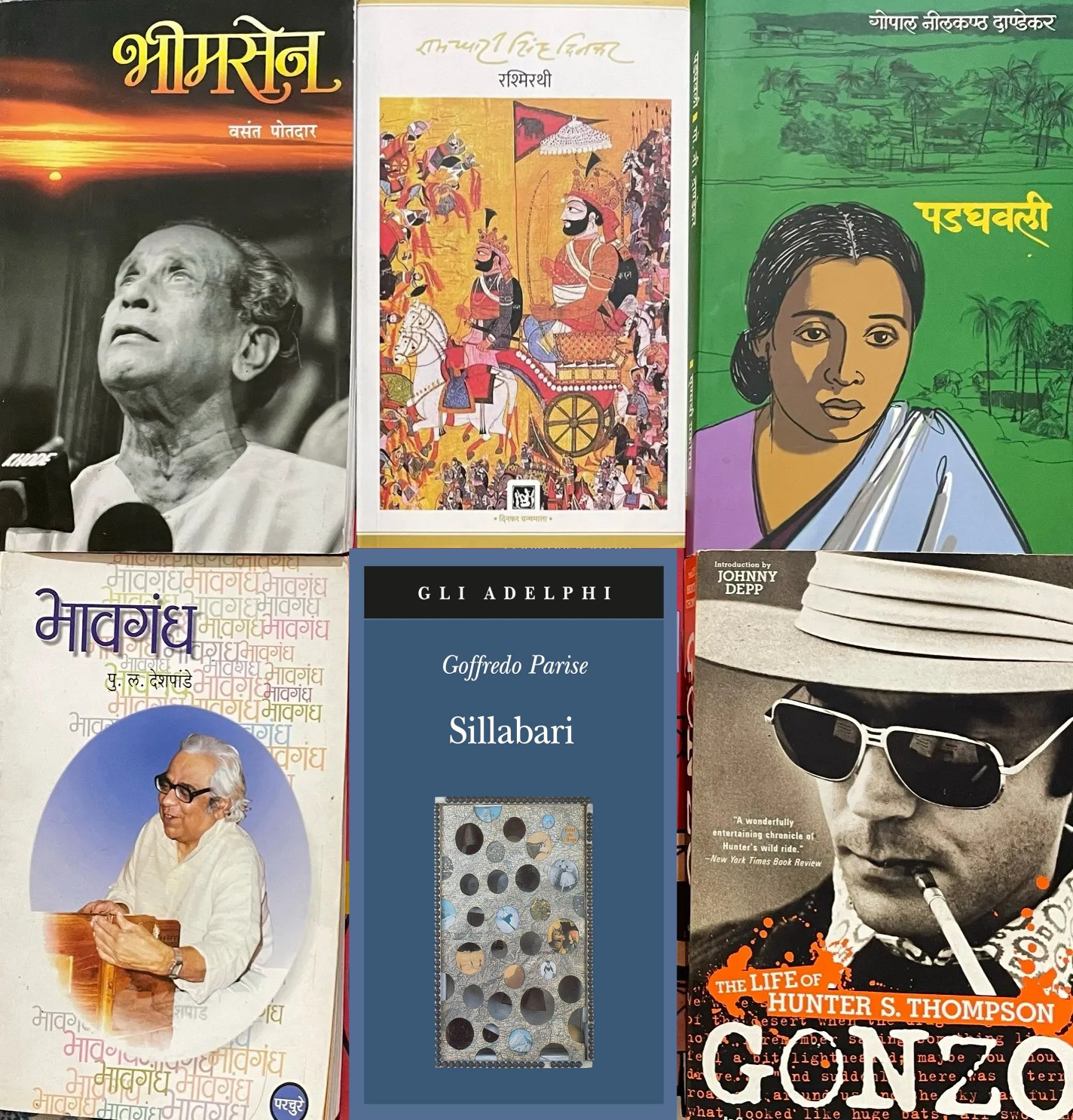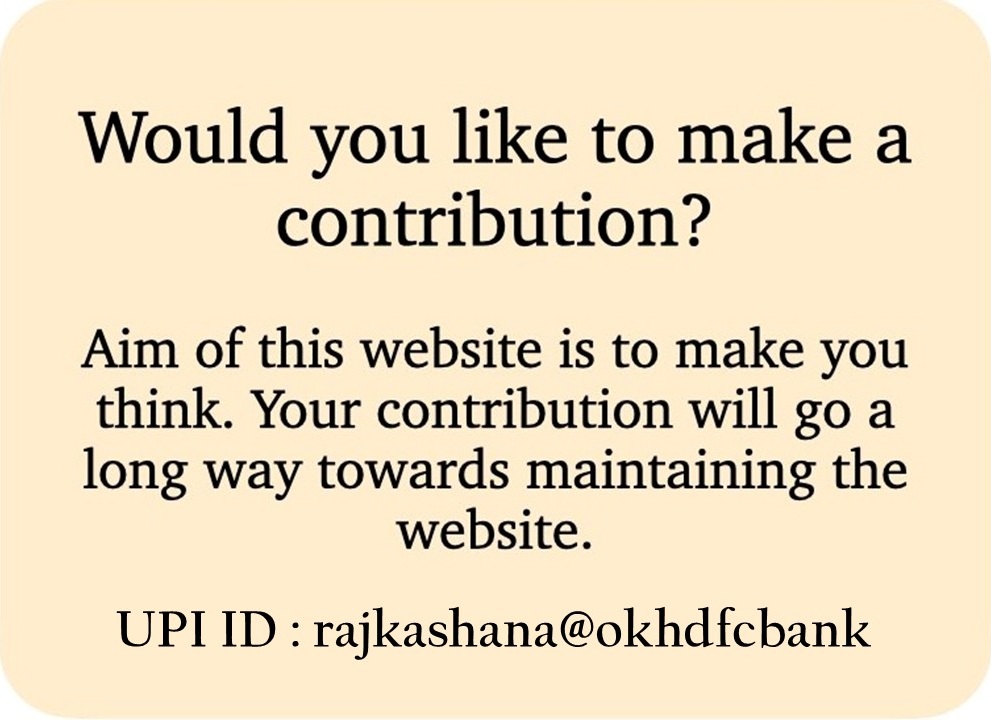I have always imagined that paradise will be a kind of library.
Jorge Luis Borges
If I ever get stranded on an island that has enough supplies and a library, you can be sure that I will not be in a hurry to write ‘HELP’ on the sandy beach. (Wait, there is a sandy beach and a library? Change of plans – I am never going to call for help).
Growing up, one of my favourite pass times was to read books. 24/7 television had not arrived yet and there were plenty of books around. Since then, books have always been by my side until about 2009-10, when for a decade or so the whole world was caught up in the smartphone revolution, aided by increasingly faster devices and internet connectivity. It took me some time and effort to get back to books but I am happy to report that it’s getting easier, just like the old days (50 books per year used to be my average.)
When I was a postdoc, I realized that I enjoyed writing about the research more than doing the actual research. So I took to writing blogs. Initially, I had three blogs on Blogspot in Marathi, Hindi, and English. I am hoping to start a Hindi blog again. And as I began to enjoy the process, so my interests began to widen. Science of course, but also movies, TV shows, current affairs etc. I became interested in all these topics just so that I could write about them.
Two thousand years back in ancient India, I would have been the impartial observer and chronicler who watches the battle from a distance, not taking part but dutifully noting down what is happening. And in peacetime, I probably would have written articles on papyruses about how my papyrus reading was suffering because I was watching too many plays and archery competitions. (17 ways to double your papyrus reading in a week!!)
When I look at my English blog today, I realize that it is heavily skewed towards movies/TV shows. And I want to correct this.
So I will be taking a break from writing about movies/TV shows.
I am also toying with the idea of not watching OTTs for an year. I would love to MRI my brain before and after. I am only half joking. Think about it. Our brains have been on a constant, relentless diet of 24/7 streaming for over a decade. You stop that and force the brain to read books. You are deliberately slowing down; something’s gotta change.
I want to write more about India. It has such a breathtaking diversity of languages, food, literature, customs. What is visible and popular about India in the rest of the world is just the tip of the iceberg. I want to learn more about India and share it through my writing. Because I have realized that the only skill I have that is worth mentioning is writing. Whether it’s of any value or not is not for me to judge.
And I could not have been in a better place at a better time. I have never seen a more vibrant India than it is right now. India has transformed during the last decade under the visionary leadership of PM Modi Ji. I am eternally grateful to be a part of this journey.
I would like to write more on science. When I was a postdoc, I used to scan scientific journals every morning to keep up with the latest developments. I recently took up this habit again and it feels amazing. To this end, I want to share some of my favorite science related websites that are not that well known to people outside the scientific circles.
If you ask any physicist what is her dream, one of the top items on her bucket list would be to get published in PRL that stands for Physical Review Letters, published by the American Physical Society (APS). Getting published in PRL means your research is ‘breaking news.’
Research today has become so specialized that even scientists do not understand research papers on topics that are outside their area of research. They could, if they study the topic but who has the time? To overcome this, APS publishes a summary of selected research papers in Physics Magazine that makes it easier to understand. There is one catch, however. You need some background in Physics. So if a popular science article makes the research accessible to everyone, Physics Magazine makes it accessible to scientists from other fields. It’s at a level midway between a research article and a popular science article. Don’t expect these articles to simplify things. Whereas a popular science article will explain what an attosecond is (billion billionth of a second), Physics Magazine will just say ‘attosecond.’
Resonance – Journal of Science Education is published by the Indian Academy of Sciences. It publishes articles on a wide range of science topics, ranging from ant navigation to quantum teleportation and carnivory in plants. Started in 1996, back issues of Resonance are a treasure trove for students and scientists alike. Not only does it publish articles on latest research, it also publishes lighter material like cartoons drawn by eminent Indian astrophysicist Dr. C. V. Vishveshwara Ji, that are kinda like inside jokes for physicists.
Annual Reviews is a nonprofit publication that publishes 51 journals on a wide range of subjects ranging from biomedical engineering and entomology to linguistics and cancer biology. They also publish Knowable Magazine where in-depth articles describe selected research that has been published in Annual Reviews.
Popularizing science is difficult and creative people are always finding new ways to simplify the complex scientific ideas. Claire Lamman, who is a cosmologist at Harvard’s Center of Astrophysics has come up with a novel technique to make “doodle summaries” of the papers. As an example, she made doodles on the 1998 paper by Adam Riess and colleagues on accelerating universe that won the 2011 Nobel Prize in physics.
The Royal Society blog is another great place for history of science, particularly during the colonial period. Through this blog, I learned about Chinthamany Raggonatha Chary Ji (1828 – 1880), a remarkable Indian astronomer who worked as a head assistant at the Madras Observatory (Chennai was formerly known as Madras.) Throughout his career, Chary Ji made 51,101 observations of 5,303 stars and published his results in the Monthly Notices of the Royal Astronomical Society. Chary Ji also discovered two new variable stars including R. Reticuli in 1867.

Browsing scientific papers these days has one major advantage – Youtube. If you can plot a graph of how much I have learned formally vs. on Youtube, my Youtube education has long surpassed the formal one and is much more varied and fun.
For instance, I was reading about research on tau neutrinos that was done by the IceCube collaboration which is a neutrino observatory in Antarctica. In the old days, this would just be a name. Today, a simple search on Youtube shows vidoes that give you a guided tour of each section of the laboratory at the South Pole.
Or take the Quantum Gas Microscope. This research is so cutting edge that it does not even have a Wiki page yet. Fortunately, the inventors have made a cool video that explains the instrument in simple language.
Some time back, I compared the internet to a busy street with ads and popups vying for your attention at every corner. But there are some quiet corners with no popups asking permission where you can relax. These are some of my favorite corners.
And all of them are free.
Coming back to books and libraries, one of my favourite vidoes is that of Italian historian and novelist Prof. Umberto Eco walking through his home library in Milan that contained over 35,000 books (He stopped counting after that!). It takes him close to 1 minute just to reach a particular section and take out the book that he wants.
This is the paradise that Señor Borges was talking about.
Further Reading/Watching
Some of the cartoons drawn by C. V. Vishveshwara, Resonance Journal of Science Education, Vol. 29, No. 1, January 2024.
Translating scientific papers for the public, Claire Lamman, Physics Today, 18 December 2023.
Magnetism and Madras, Hirra Ateeq, The Royal Society Blog, 21 February 2023.



